David Bailey's Stardust: ‘Everyone’s got a story - you just have to find it'
By William Cook | 14 July 2015
The Edinburgh Art Festival will celebrate one of the world’s most distinctive photographers in a new exhibition at the Scottish National Gallery. David Bailey has selected over 300 works from his illustrious career for Bailey’s Stardust. Photographs from his time in East Africa, Papua New Guinea, Australia and Delhi sit alongside career-defining images from the world of fashion and the arts. The show also features a series of new works titled Moonglow. WILLIAM COOK talks to the legendary photographer ahead of the largest exhibition of his portraits ever to be shown in the UK.

David Bailey is famous for photographing famous people, but one of his finest photos is a self-portrait, taken when he was still unknown. It was 1957 and he was only 19, but his trademark style is already there.
The composition is bold but simple, the subject is supremely self-assured. Bailey reclines on a camp bed, stripped to the waist, oozing self-confidence and sex appeal.

Above his bed, instead of the usual girlie pin-up, is a Picasso portrait of Jacqueline Roque, Picasso’s wife and muse.
"I had a Jewish mate in the East End who’d been to art school – nobody even knew what an art school was," says Bailey. "He told me about this guy called Picasso. It changed my life, really."
Picasso made Bailey realise there were no rules dictating what you could or couldn’t do. He made him realise there was no need to worry what other people might think.
Within a few years, Bailey had become renowned as the man who created the Sixties ‘look’ – a dramatic break with the demure photos of the 1950s.
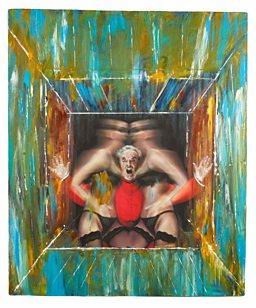
His style was fresh and informal – he made fashion photography seem fun and daring. "I never cared about the clothes that much," he says. "If the girls looked good, and looked happy in what they were wearing, that would sell the dresses."
If I’d been educated, I’d have ended up a bank clerk in Ilford - but I couldn’t possibly do that, being dyslexic
His audacious shots of Jean Shrimpton made her the leading model of the day. The fact that they were an item gave these pictures an added frisson, but though his best work had a strong sexual charge, his imagery was never lewd.
Seeing these photos, you can tell he really liked his models. Sometimes he went to bed with them, but above all they were good friends.
Since then he’s photographed everyone from rock stars to refugees, and this week he arrives at the Scottish National Gallery with two complementary (yet contrasting) shows.
Bailey’s Stardust is a selection of some of his greatest photos, which arrives in Edinburgh after an international tour. Moonglow is a new show demonstrating his work in other media – from found objects to silkscreens. Bailey doesn’t want to call this double-bill a retrospective (a lot of the work is new) but it’s still a pretty comprehensive survey of an incredible career.
Inevitably, the headline-grabbing pictures are his shots of ‘Swinging’ London superstars: John Lennon, Mick Jagger, Michael Caine... "They weren’t even famous when I knew them," he says. "I knew all these people by coincidence."
But clearly, in London in the 1960s, there was something special going on. These people lived cheek by jowl. They went to the same parties. They shared the same friends.
"It happens like that – look at Paris in the Thirties and Berlin in the Twenties," says Bailey. "They all became the centres of movements."
For a few years, London became the centre of a movement. A lot of creative people collided, at the same time in the same place, and for a lot of those people the common factor was David Bailey.
Bailey will always be associated with that era – an era he helped to define - but there’s much more to his work than snapping celebrities. Bailey’s Stardust also features photos of his native East End and foreign locations as far afield as Papua New Guinea.
A few years ago, in his mid-seventies, he set out on a gruelling journey to the isolated Naga Hills, on the border between India and Burma. He says: "If you’re going to travel, you should travel to places where people don’t go."
Bailey is dyslexic. "That’s an advantage, in a way," he explains. "If I’d been educated, I’d have ended up a bank clerk in Ilford - but I couldn’t possibly do that, being dyslexic."
He’s never been preoccupied with the technicalities of photography. He doesn’t labour over a shoot, taking hundreds of pictures. "I’m quite quick," he says. "It’s just waiting for the moment really, and trying to grab it."
His portraits are pictures of relationships, enhanced by an innate understanding of line and shape, and light and shade.

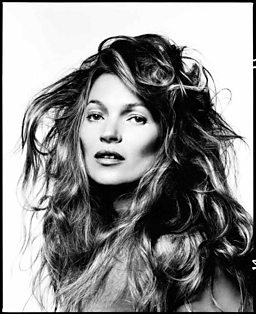

Related Links
Bailey isn’t opposed to digital photography, but he still prefers old-fashioned film. "The problem with digital is, it tends to make everything look the same," he argues. "It looks like it’s come off a computer, rather than come out of a camera."
There’s no difference between using a camera and using a paint brush
The immediacy of digital isn’t something he relishes, either. "I hate seeing the pictures straight away, on digital. I don’t like to see the pictures until a couple of days later, because then I have time to think about what I did."
However his attitude remains pragmatic. "It depends where you are. If you’re in Afghanistan it’s best to use digital, because you don’t want to be jumping in and out of helicopters with rolls of film."
A painter throughout his life, he makes little distinction between painting and photography. "If you’re any good, it’s the same thing," he says. "There’s no difference between using a camera and using a paint brush."
He particularly likes Caravaggio - a painter who understood human drama, and the power of shadows, two constants in Bailey’s work. "He suddenly brought this sexuality to painting that nobody had done before," says Bailey. "He’d have liked a camera, for sure."
Bailey was once asked to shoot Picasso – he turned down the assignment. "I didn’t want to meet him," he says. "Suppose I’d walked in and met Picasso and he farts? It would completely destroy my image of Picasso! I think it’s best to try and keep away from your heroes."
So what’s next for Bailey – still going strong, after six decades in the saddle? "It’s a race against time now, isn’t it?" he chuckles. "I’m nearly 78!"
However he has no intention of slowing down. A prolific filmmaker, he still hopes to make a film about his East End childhood during the Second World War. "I spent most of the war down in the coal cellar," he recalls. "The shelters in the gardens, they were always full up with water."
Even after all these years, he retains a childlike enthusiasm for the magic of photography, saying: "What made me interested in photography was the darkroom, really. When I was twelve I was fascinated that you could put something in some coffee coloured liquid, and a picture came up. I used to do it in the coal cellar, where I spent most of the war."
Yet he’ll probably be best remembered for his star portraits, rather than his painting or his filmmaking, simply because he does them better than anybody else.
Not only does he have a genius for creating iconic images – he also has a unique talent for getting his subjects to loosen up. His study of Jack Nicholson captures the essence of the man, and his photos of more modern stars like Johnny Depp are just as good.
Celebrity builds a barrier between the artist and the real world. Bailey breaks down that barrier. "Everyone’s got a story - you just have to find it," he says.
Stardust and Moonglow are at the Scottish National Gallery, Edinburgh, from 18 July to 18 October 2015.
All images © David Bailey

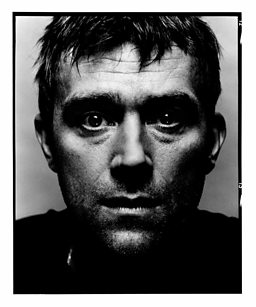

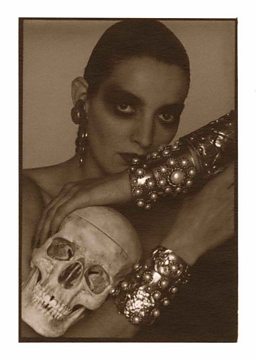

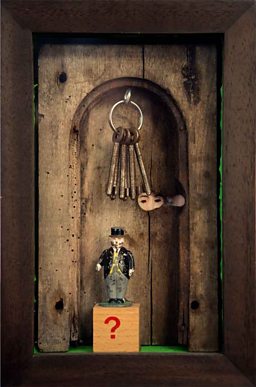


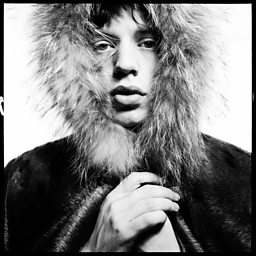
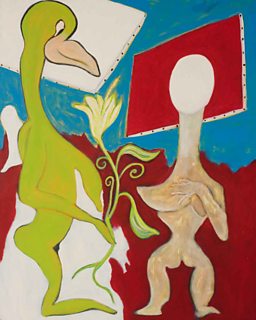
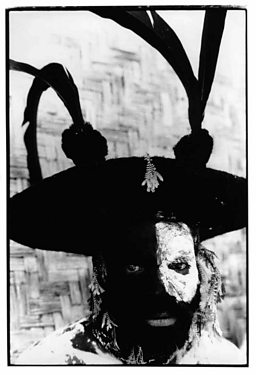

More photography from BBC Arts
-
![]()
War and peace
The compassionate photography of Don McCullin.
-
![]()
Childhood in the 1970s
Tish Murtha’s tender photos of deprivation in Britain.
-
![]()
Neon dreamland
Liam Wong's sci-fi-style images of Tokyo at night.
-
![]()
Pup art
William Wegman's Polaroids of his loyal Weimaraners.
-
![]()
Stanley Kubrick
1940s New York through the lens of teenage Stanley Kubrick.
-
![]()
Jailhouse Rock
Behind-the-scenes photos of Johnny Cash's prison shows.
-
![]()
The real Sin City
Hard-boiled photographs tell the history of crime in LA.
-
![]()
10 years with Kate Bush
Rare photographs of the singer at the height of her career.












